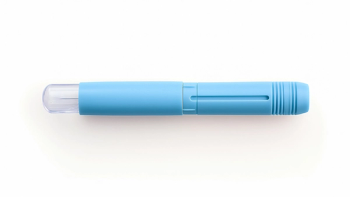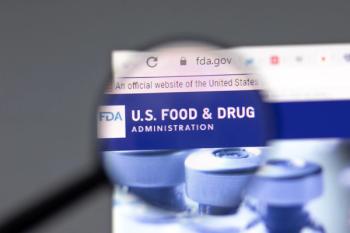
- Applied Clinical Trials-01-01-2007
- Volume 0
- Issue 0
ACT European Summit Report
Safety issues come under close scrutiny at Amsterdam meeting.
If clinical trial organizers had to nominate a single subject that rates as their current priority, it would probably be safety. This topic certainly dominated much of the agenda at the Applied Clinical Trials European Summit, held in Amsterdam from 17 to 19 October 2006.
Safety groups should have a higher profile and a more prominent role in the strategic aspects of benefit–risk optimization, noted John Ferguson, vice president of pharmacovigilance (PV) at Millennium Pharmaceuticals. Such groups should be first in line to receive safety information, adequately resourced, independent, an equal partner, decision-makers, and well-connected. They must be able to communicate complex information in simple terms, determine when and how to inform the public and other stakeholders, strike the right balance ("no warning without informing"), and anticipate/manage unintended consequences.
Ferguson thinks chief safety officers should have the same standing as the lead for medical research under a chief medical officer. Also, they should be able "to go toe-to-toe with medical doctors in clinical development and medical affairs on their turf." They need a sound understanding of analytical and observational research designs and an ability to prioritize and negotiate change. They should be flexible individuals with high numeracy IQ.
Successful risk communication requires looking at issues from the patient's point of view and building up an understanding of how the public perceives risk. Communicating accurate, timely, and balanced information is also essential to enable all stakeholders to make informed decisions.
"The bottom line is that successful benefit–risk management requires that safety personnel have the stature, vision, expertise, independence, bandwidth, leverage, and relationships needed to effect change at the level of the enterprise," said Ferguson. "A collegial relationship with agencies and the media makes a huge difference in managing potential crises. Cultivate your relationships with regulators and the media before you have a potential crisis."
Codifying compliance inspections
"Compliance inspections are the way of the future, and they need to be a routine activity for industry," said Vicki Edwards, director of pharmacovigilance at Abbott Laboratories in Maidenhead, UK. "They should be viewed as a partnership and an opportunity for both parties to learn and shape the future process. There is also a need for better mutual appreciation of the challenges on both sides, and more clarification of interpretation of regulations" (see sidebar: Five Keys to Compliance).
Five Keys to Compliance
Edwards described an inspection in which she participated. The UK Medicines and Healthcare products Regulatory Agency (MHRA) issued the inspection plan 10 days before their arrival. There were four inspectors, some of whom were in training, plus an observer. A significant amount of time was spent on reviewing documents, the database was studied, and a live interrogation of data was requested. There were more than 160 requests for documentation, and 22 staff members were interviewed.
"It was a very intense experience," she said. "The interviews were very detailed and probing, with a focus on interfaces and group interviews. Departmental visits were very focused and quite stressful."
At the end of the inspection, inspectors gave verbal feedback on their findings and observations and provided interviewees with an opportunity for questions. There were no real surprises, and everything was fixable. Overall, the inspection was an excellent opportunity to raise the importance of PV within some functions of the business, noted Edwards.
A sponsor must be able to demonstrate its PV systems, and should ensure that the documents reflect what the company does and not what it would like to be doing. Among the procedures that should be described are the activities of the qualified person, case processing, follow-up reports, expedited reporting, and signal generation and risk–benefit assessment. Copies of procedures need to be available within two working days. Inspectors may request further details on databases, links with other organizations, training, documentation, and quality management.
Post-Directive regulatory update
The European Union's Clinical Trials Directive (CTD) was implemented more than two years ago, and it has brought some benefits, according to Dr. Ingrid Klingmann, president of Belgium-based Pharmaplex and co-chair of the European Forum for GCP's ethics working party. Implicit study approval for competent authorities in all EU member states now takes less than 60 days, and explicit approval is only needed for "complex" products. Also, one ethics committee opinion is needed per member state, GCP applies for all studies, data protection rules have been clarified, and the same requirements exist for labeling of study medication.
Dr. Ingrid Klingmann, pictured here posing a question from the Summit floor, says progress has been made on the harmonization of EU regulations but considerable work still remains.
However, a great deal of harmonization work still needs to be done, particularly in the field of ethical review, Klingmann said. In reality, different procedures persist in all EU nations, and the requirements of ethics committees (ECs) for information vary greatly. Sponsors must still contact virtually the same number of committees, and the need for translations is practically unchanged, while fees paid by sponsors have risen. Furthermore, real timelines are not always improved because interpretation of start time varies.
"Reporting requirements for SUSARs (suspected unexpected serious adverse reactions) are in conflict with international reporting requirements for SAEs (serious adverse events), resulting in global SOPs requiring the reporting of SUSARs and SAEs," Klingmann said at the opening plenary session. "Clinical trials in Europe have not been successfully harmonized by the CTD, and the attractiveness of Europe for clinical research has not increased. However, the need for improvement has been broadly recognized by all stakeholders of the clinical trial process. Efforts are made to achieve harmonization in little steps."
New developments such as the EU regulations for pediatric trials that are due to come into force in early 2007 may lead to greater harmonization. A special committee at the EMEA has overseen the pediatric legislation, and it requires special expertise in ECs and competent authorities, as well as special rules for transparency, Klingmann said.
The new regulatory framework has contributed to a significant decrease in the number of clinical trial authorizations in Western Europe, noted Jean-Pierre Tassignon, group executive vice president of PSI Pharma Support International. Between May 2004 and April 2005, 1250 authorizations were made in Germany, compared with 1700 a year earlier. The comparable figures for the UK were 857 and 1700, and for France 1200 and 1045. During this period, the total number of authorizations for these three countries fell from 4600 to 3151, amounting to a 30% drop.
Academic research has faced particularly acute challenges, but over the long term the regulations will improve quality and strengthen its capacity to develop public–private partnerships, believes Prof. Jacques Demotes-Mainard, coordinator of the European Clinical Research Infastructures Network (ECRIN) and advisor to the French Ministry of Research.
Philippa Smit-Marshall (PharmaNet) chats with fellow presenters Ken Getz (right) and Pieter Guelen during the Speakers Lunch.
"This requires appropriate infrastructures and funding," he said. "Public institutions should develop their capacity to act as a sponsor in national and international academic studies. Protection of patients and credibility of data should not be restricted to clinical trials on medicinal products, but extended to any type of clinical research. Also, new EU legislation and guidance covering any type of clinical research should be prepared by DG (Directorate-General) Health, DG Research, and DG Enterprise, with contributions from academic researchers."
Tackling trial registries
Another fast-changing area is clinical trial registries. They offer easier and better organized access to trial information for everybody involved in clinical research, but many of the users are competitors who want to keep an eye on other sponsors' activities, said Dr. Beat Widler, global head of clinical quality assurance at F. Hoffmann-La Roche in Basel, Switzerland. In addition, risks and threats are posed by a "mushrooming" of registries, different (and at times conflicting) standards and requirements, and their use as a political tool.
"They should facilitate subject recruitment, but the numbers that we have recruited in this way can be counted on one hand. Patients announce their interest in participating in a trial, and physicians should follow up, but they don't always do it," Widler said.
Widler thinks industry needs to become more active in shaping the development of guidelines for registries. He fears that they suffer from a lack of quality control, and only active engagement can help manage the complex process and ensure quality. Some guidelines and standards do not serve patients and physicians' needs, and the governance of trial registries should not be related to for-profit status, Widler said. Quality control procedures should be more clearly defined. A step forward would be to organize a workshop with all stakeholders under a neutral chairperson. This would help to identify gaps and issues in the current process, align expectations and objectives, and drive the development of future guidelines.
Note: This year's ACT European Summit will be held in Berlin, Germany, from 29 to 31 October. For more details, visit
Philip Ward is the European Editor of Applied Clinical Trials.
Articles in this issue
almost 19 years ago
eShowcase: TCN e-Systemsalmost 19 years ago
Clinical Research Faces Scrutiny in Year Aheadalmost 19 years ago
Beyond Blockbustersalmost 19 years ago
Roadmap to Implementing the EU Directivealmost 19 years ago
eShowcase: QUMAS Compliance Closed-Loop Processalmost 19 years ago
Meet the EAB: Aaron F. Bartlonealmost 19 years ago
New Year Brings New Opportunitiesalmost 19 years ago
Stopping a Trial Early for Treatment Benefit: Pros & Consalmost 19 years ago
Reverse Auctions: Crusade or Curse?almost 19 years ago
eShowcase: CogState DataPointNewsletter
Stay current in clinical research with Applied Clinical Trials, providing expert insights, regulatory updates, and practical strategies for successful clinical trial design and execution.






.png)



.png)



.png)
.png)
